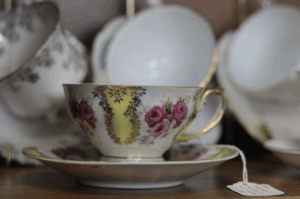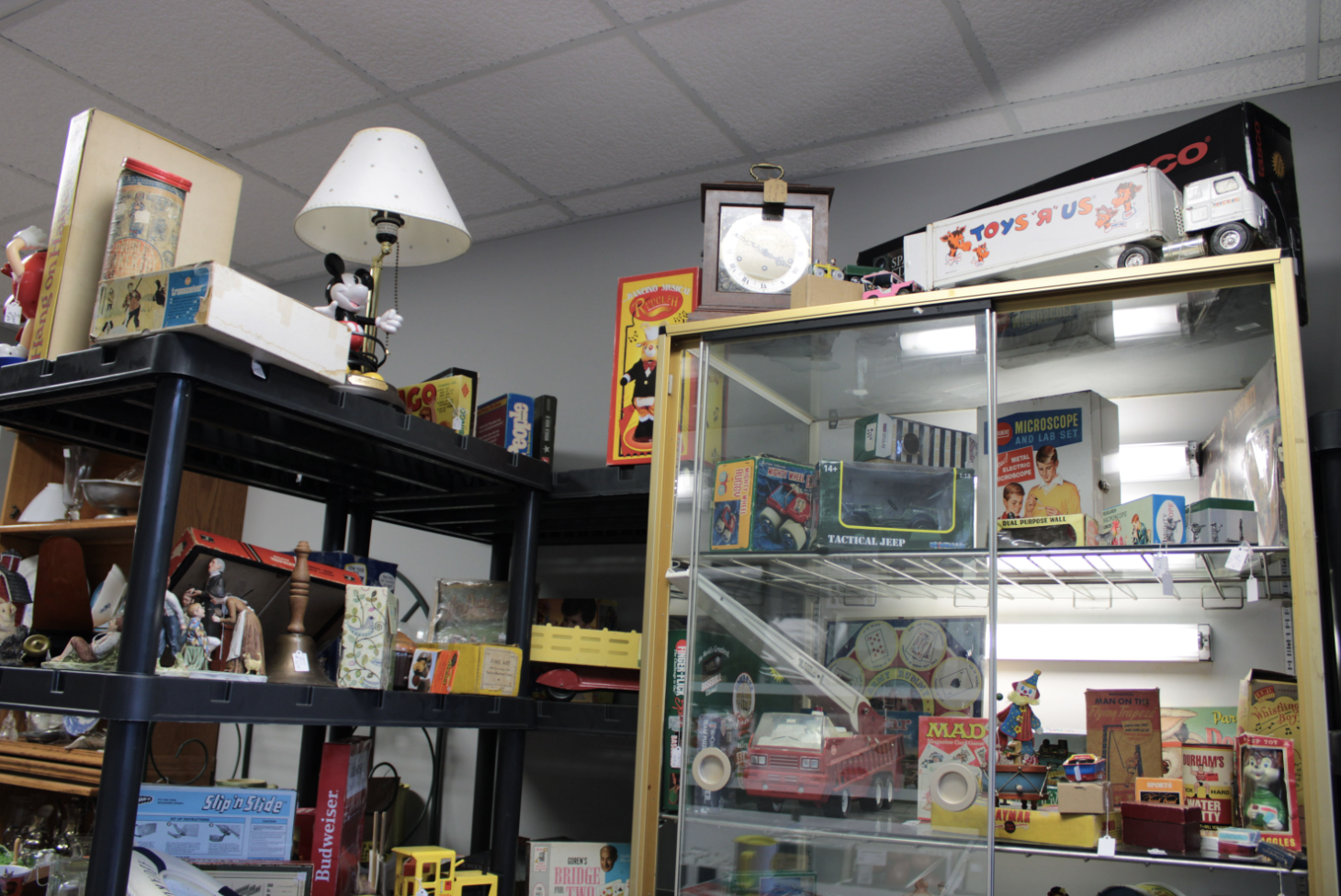Carmel’s Oldest Antique Shop Blends History & Changing Trends
 For Peg Durrer, antiques are a family business. She is the owner of the Antique Emporium, and while it has changed locations over the years, it’s the oldest antique store in Carmel. Durrer’s grandmother was an antique dealer in the early 20th century, and she passed on that love of history and antiques to her granddaughter.
For Peg Durrer, antiques are a family business. She is the owner of the Antique Emporium, and while it has changed locations over the years, it’s the oldest antique store in Carmel. Durrer’s grandmother was an antique dealer in the early 20th century, and she passed on that love of history and antiques to her granddaughter.
Durrer’s husband became interested in antiques when they were young, after she purchased a table at auction for much less than it would have cost to replace it. He was immediately on board and got very interested in antiques after that.
They started out as dealers in a larger shop like what the Antique Emporium is now, before growing their business and becoming owners. They first opened in Shoshone Place, later moved to Monon Square for more space, and then recently relocated back to a smaller building.
Durrer, who holds a license from the International Society of Appraisers, explains that any one item can have three different values depending on its purpose — whether someone wants to sell it, insure it or simply learn if it has monetary worth.
“They’re wondering, ‘What am I going to do with my things?’ or thinking of their adult children who are faced with cleaning out their parents’ home,” she says. “If I think it’s something that any one of my dealers might be interested in, then we go from there. If I think they won’t, but I have other ideas of where to dispose of it, I help them with that, too.”
Durrer has seen tastes shift over the years.
 “What’s happened over the last five years is that people have gone from being more formal to less formal in their tastes. We’re very dependent on the builders and designers,” she says. “I had a terrible fire in 2018 and had to rebuild my house from the ground up. I wanted to put a formal dining room back in, but the builder didn’t want to because it wasn’t ‘current.’ But I won my battle.”
“What’s happened over the last five years is that people have gone from being more formal to less formal in their tastes. We’re very dependent on the builders and designers,” she says. “I had a terrible fire in 2018 and had to rebuild my house from the ground up. I wanted to put a formal dining room back in, but the builder didn’t want to because it wasn’t ‘current.’ But I won my battle.”
Open-concept designs, she notes, have changed how people buy art and décor.
“All of this open-concept design means there’s a lack of walls to hang things,” Durrer says. “Values of art have changed — not necessarily fine art, but mirrors, formal art prints and curio cabinets. There’s no place to put them, so the items that were going inside them go begging.”
She recalls that country and primitive styles — or “the farmhouse look” — have been popular in recent years.
“I see that waning, but I’m not sure what’s coming on the horizon,” she says. “The younger people have really jumped on the uranium glass. I used to be the only one in the shop with a blacklight, and now I see people coming in carrying them, and I know exactly what they’re looking for.”
Each of her dealers offers a different selection of antiques. She has one who specializes in teacups and teapots, and another who focuses on vintage toys.
“I have a dealer who does nothing but vinyl,” she says. “A number of years ago, I got rid of all my vinyl records because I couldn’t find a new turntable, and all of a sudden, that generation became old enough to go out and shop for vinyl.”
Durrer tends to buy her own furniture in antique shops because it’s solid wood and well-made, rather than plywood or other cheap materials.
“I am beginning to get younger people saying they bought things at IKEA, but now it’s falling apart and they’re looking to replace it,” she says. “They find out it doesn’t stand up to a family. It’s taken that generation a while to catch on.”
Durrer enjoys the antique business because it forces her to keep learning about new trends, and she loves socializing with customers. Over the decades, she has gathered a wealth of knowledge about manufacturing and history.
“Up until the war, glass often had magnesium in it to harden it,” Durrer says. “Then they needed that for the war, so they found another way to manufacture glass. When that magnesium glass is exposed to light for a long time, it starts to purple. We would buy those items and stick them in the window for the sun to hit them every day, and they’d get a much darker purple. When they don’t turn purple, that tells me how old they are.
“During the early 1900s, the pastime for housewives was learning to paint china,” she adds. That’s where you get all of these pretty plates or cups where there’s just one. Oftentimes they’re signed. I was always surprised by the quality — it looked like a professional had done them. I have my grandmother’s china from 1902 that she monogrammed and painted with gold leaf. What really drives antique shops is that people buy what they remember from grandma’s house.”
The Antique Emporium is located at 170 W. Carmel Drive in Carmel.






